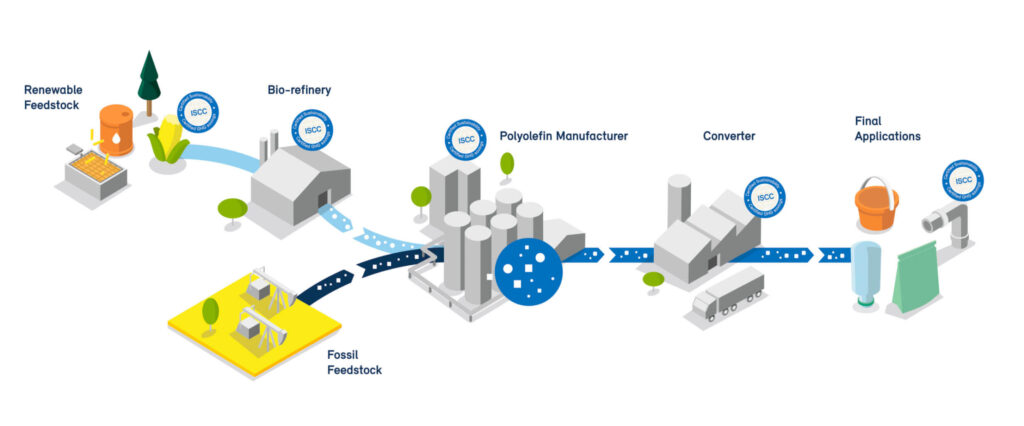The Mass Balance Model
Today, we all use plastic for its many properties and benefits. But we need these benefits to come with no cost to the planet. To achieve this we must make and use plastics more sustainably, and ultimately in more circular ways, using recycled and renewable feedstocks. That change is not as simple as flipping a switch. It’s a journey. And we need to make visible progress as of now.
Chain of Custody models can help move us forward by increasing the proportions of sustainable feedstocks we use. And right now, we believe the best chain of custody model is with Mass Balance. It offers us the greatest set of benefits and the best path to visible progress for circular plastics, while building stakeholder trust in the right Chain of Custody model. This will help us to track, trace and verify the sustainability of those feedstocks throughout the chain to make it more visible and tangible.
The Mass Balance model works by partially replacing fossil feedstock with sustainably sourced alternative feedstocks. As Borealis we are ISCC PLUS certified. This allows us to make ISCC PLUS certified sustainable polyolefins without impacting quality or safety standards.

A cradle-to-gate Life Cycle Assessment to assess the environmental profile of our products using renewable feedstock compared to equivalent fossil feedstock produced at our sites in Finland, Sweden and Belgium was performed and critically reviewed in accordance with ISO14040:2006 and ISO14044:2006.
In Neoni, circular alternatives for certain grades produced at our other sites are also presented. These alternatives are proposed using the transfer of certificates under the rules of the ISCC PLUS certification scheme. Additionally, Neoni presents other circular alternatives as virtual grades. Virtual grades are those grades that are, so far, not commercialized or where the complete fossil feedstock-based monomer component cannot yet be fully replaced with a renewable feedstock-based monomer in accordance with the Mass Balance Model. In these cases, the circular solution is shown as 100% renewable feedstock-based for illustration purposes of the potential CO2e benefit. Complete Life Cycle Assessment studies do not exist for circular alternatives of grades produced at sites other than those in Finland, Sweden and Belgium. In those cases, results arising from from our completed and reviewed LCA study on the renewable feedstock-based polyolefins are presented as proxies to demonstrate the potential benefit. These are also incorporated into the compound grade calculations where applicable.